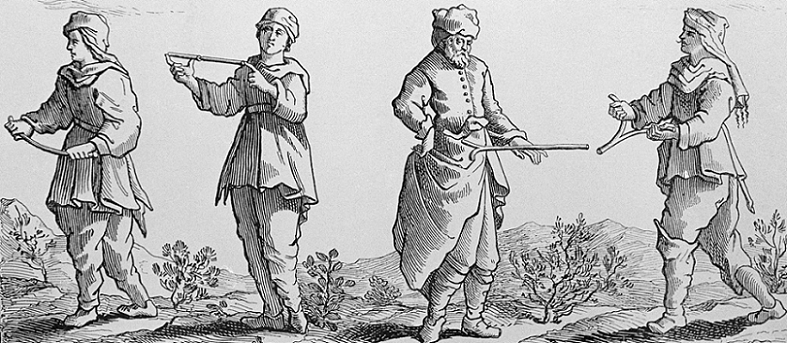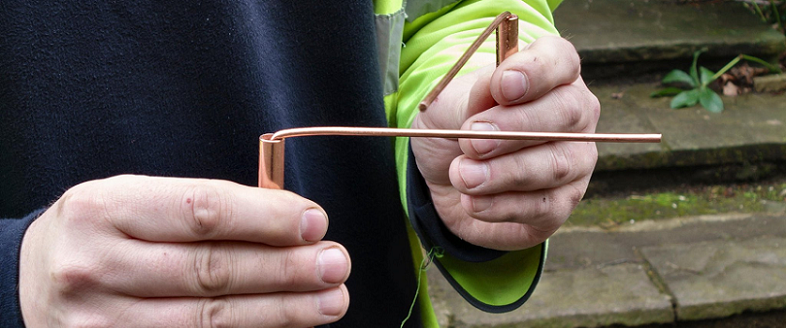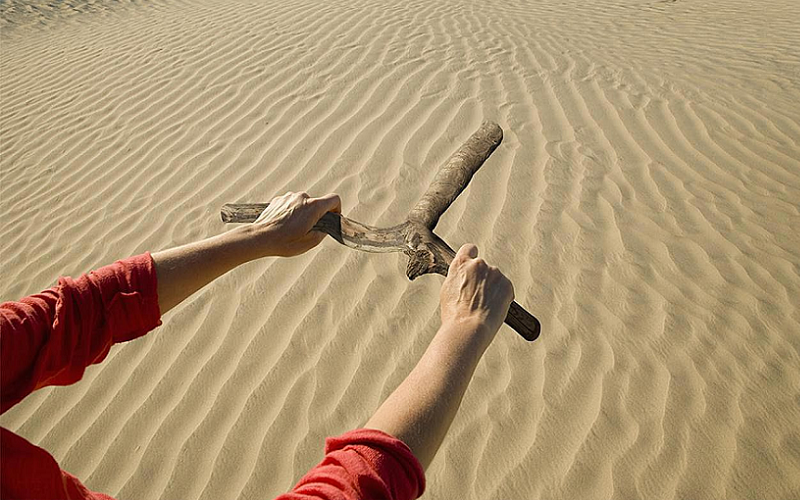Dowsing, also known as divining or witching, is an ancient practice that has been used for centuries to locate objects, substances, or information that are hidden or otherwise not easily accessible. Despite its long history, the practice of dowsing remains shrouded in mystery and continues to spark debate and discussion among both believers and skeptics.
This article explores the history of dowsing, from its origins in ancient civilizations to its spread across the world, and examine the theories behind the practice as well as its various applications and techniques.
What Is Dowsing?
Dowsing is a type of divination or supernatural technique that is used to locate hidden objects, substances, or information. It typically involves the use of a dowsing tool, such as a rod or pendulum, which is held by the dowser and moved in response to unseen forces. The dowser then interprets the movement of the tool to determine the location or presence of the object in question.
Although dowsing has been used for a variety of purposes throughout history, it is most commonly associated with finding water sources and minerals. Despite its long history, dowsing remains a controversial and often misunderstood practice, with many skeptics questioning its validity and effectiveness.
The Origins of Dowsing
The origins of dowsing are difficult to trace, as the practice has been used by various cultures and civilizations throughout history. However, evidence of dowsing-like practices can be found as far back as ancient Egyptian times, where divination rods were used to search for hidden objects and underground water sources.
The practice also has roots in European folklore, where it was commonly used by farmers and rural communities to locate water sources and minerals. As the practice spread throughout Europe, it was adopted by various religious and spiritual communities, who used it for a variety of purposes such as divination and healing.
In the modern era, dowsing has become a more widespread and accepted practice, with many people using it as a tool for personal and professional development. Despite its long history, the exact origins of dowsing remain a subject of debate and speculation, with some experts suggesting that it may have originated as a way to connect with spiritual or supernatural forces.

The Theory Behind Dowsing
The theory behind dowsing is a topic of much debate and discussion, with some experts suggesting that it is based on scientific principles, while others view it as a purely supernatural or spiritual practice. Those who support a scientific explanation of dowsing often point to the use of dowsing tools as a form of amplification, allowing the dowser to detect subtle changes in energy or electromagnetic fields that are associated with hidden objects or substances.
Some experts also suggest that dowsing may be related to the phenomenon of muscle testing, where the body unconsciously responds to stimuli in a way that can be interpreted by the dowser.
On the other hand, many dowsers and proponents of the practice view dowsing as a spiritual or supernatural phenomenon, relying on intuition, energy, or a connection with a higher power to guide their dowsing tools. Some believe that the dowser’s own energy and intention, combined with the energy of the object being sought, are what cause the movement of the dowsing tool.
Regardless of the theory behind it, dowsing remains a controversial and often misunderstood practice, with many skeptics questioning its validity and effectiveness. Despite this, dowsing continues to be used by many people around the world, who view it as a powerful tool for self-discovery, personal and spiritual growth, and practical applications such as finding water sources and minerals.
The Practice of Dowsing
The practice of dowsing involves using a dowsing tool, such as a rod or pendulum, to locate hidden objects, substances, or information. The dowser holds the tool and moves it in response to unseen forces, interpreting the movement to determine the location or presence of the object in question. The exact technique used by the dowser can vary depending on their personal approach and the purpose of their dowsing, but some common elements include focusing the mind, setting an intention, and being open to receiving information.
There are several different types of dowsing, each with its own specific use and technique. For example, water dowsing is commonly used to locate underground water sources, while mineral dowsing is used to find minerals and other geological deposits. Other forms of dowsing include radiesthesia, which is used for medical diagnosis and treatment, and map dowsing, which involves using a dowsing tool to locate objects or information on a map.

Regardless of the type of dowsing being practiced, the key to success is often the dowser’s state of mind and intention. Many dowsers believe that it is essential to be in a relaxed and focused state, free from distractions and negative thoughts, in order to receive accurate information through the dowsing tool. Some also believe that it is important to have a clear intention and goal in mind, as well as an open and receptive attitude, in order to receive the best results.
While dowsing is often associated with superstition and skepticism, it remains a widely used practice around the world, with many people finding it to be a valuable tool for personal and professional development. Whether you’re a seasoned dowser or simply curious about this fascinating practice, the key to success is to approach it with an open mind and a willingness to explore and learn.

The Applications of Dowsing
Dowsing has a wide range of applications, from practical uses such as locating water sources and minerals, to more spiritual and personal purposes such as self-discovery and personal growth. One of the most common uses of dowsing is water dowsing, which involves using a dowsing tool to locate underground water sources. This type of dowsing has been used for centuries by farmers and rural communities to find sources of water for irrigation and other purposes.
Another common application of dowsing is mineral dowsing, which involves using a dowsing tool to locate minerals and other geological deposits. This type of dowsing has been used by geologists and miners for centuries, and is still used today by many companies and individuals to explore for minerals and other valuable resources.
Beyond these practical applications, dowsing is also used for a variety of personal and spiritual purposes. For example, some people use dowsing for self-discovery and personal growth, using it as a tool to explore their own beliefs, values, and motivations. Others use dowsing for divination and spiritual guidance, relying on the movement of the dowsing tool to provide insight and direction.
Regardless of the specific application, dowsing remains a controversial and often misunderstood practice, with many skeptics questioning its validity and effectiveness. Despite this, it continues to be used by many people around the world, who view it as a powerful tool for self-discovery, personal and spiritual growth, and practical applications such as finding water sources and minerals. Whether you’re a seasoned dowser or simply curious about this fascinating practice, the key to success is to approach it with an open mind and a willingness to explore and learn.

